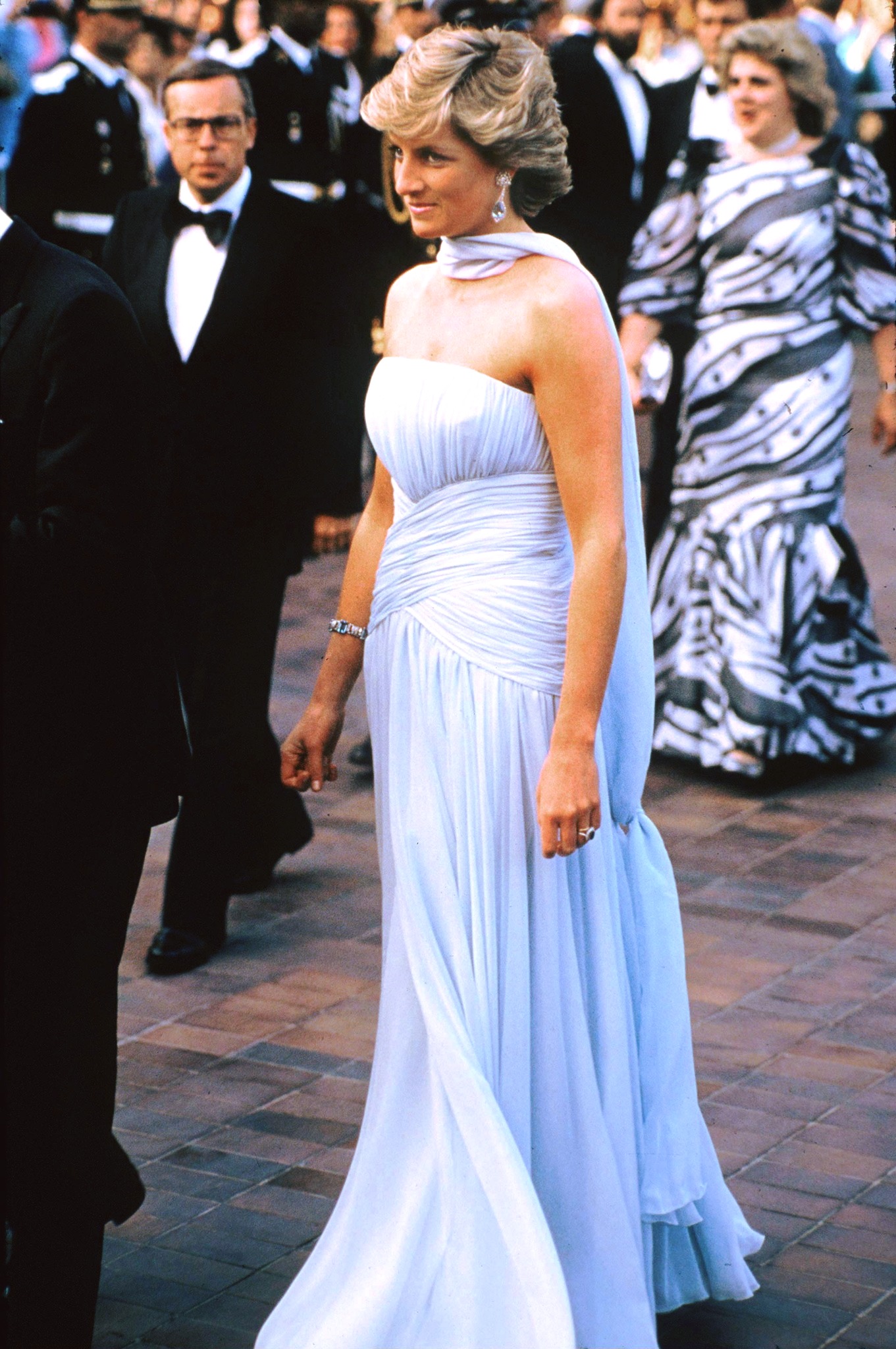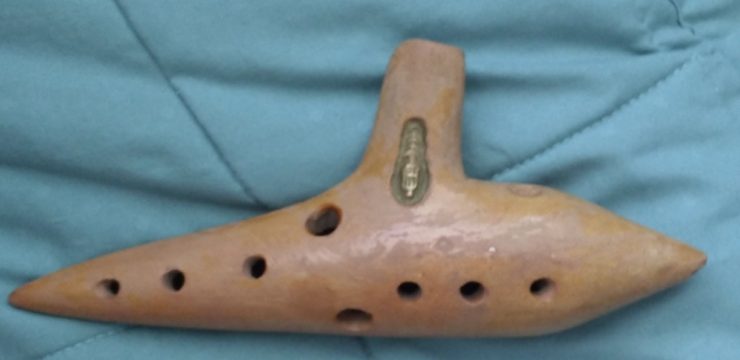When Princess Diana made her unforgettable entrance at the 1987 Cannes Film Festival, she appeared almost otherworldly, gracefully gliding across the red carpet in a powder-blue chiffon gown that flowed like a gentle wave in the Mediterranean breeze. The cameras eagerly captured every detail of her ethereal look, her poise, and her quiet elegance.

Yet beyond the glamour and flashing lights, very few people realized that this gown carried more than just fashion significance—it carried a silent, deeply personal message, a tribute wrapped in silk that honored a woman who once offered her comfort when she needed it most. Diana, widely known as the “People’s Princess,” had a gift for communication that extended far beyond spoken words. She often used her fashion choices as a form of subtle expression, crafting narratives of compassion, strength, and solidarity with every gown she wore. Her love for soft pastel tones and flowing silhouettes wasn’t merely aesthetic; it was intentional, a way to present herself as relatable, kind, and human, a stark contrast to the stiff, traditional image of royalty.
On that particular evening in Cannes, Diana’s appearance was not just a matter of style—it was an act of remembrance and emotional tribute. While her official reason for attending was to celebrate British cinema and honor Sir Alec Guinness, the most memorable part of her ten-hour visit with Prince Charles was the stunning gown she wore, designed by Catherine Walker, one of Diana’s closest collaborators and the designer behind many of her most iconic looks. But this dress wasn’t just another showstopper—it was a silent love letter to another royal figure, one whose life closely paralleled Diana’s in both beauty and tragedy.
Grace Kelly, the glamorous Hollywood actress who became Princess Grace of Monaco, had died in a devastating car crash just five years before. The loss of Grace echoed eerily in Diana’s own tragic passing a decade later. Diana had met Grace back in 1981 at a charity event shortly after her engagement to Prince Charles had been announced. Overwhelmed by the media frenzy and the pressures of her new role, Diana fled to the restroom in tears. It was there that Grace found her, spoke to her kindly, and offered words of comfort about the isolating realities of royal life. That small moment of human connection stayed with Diana for the rest of her life.
So when Diana arrived at Cannes wearing a flowing, strapless pale blue gown, it wasn’t just a fashion statement—it was a symbolic echo of the Edith Head-designed dress Grace Kelly famously wore in Alfred Hitchcock’s To Catch a Thief, a film shot along the very same coastline. The resemblance was no coincidence. Diana’s gown served as an unspoken tribute to Grace, a silent message of remembrance, sisterhood, and shared sorrow. Although the media coverage that night focused on Diana’s striking appearance, the glamour of the red carpet, and the presence of British royalty, the emotional depth of her tribute was overlooked. Yet for those who paid attention, every choice—color, fabric, silhouette—was deliberate, a nod to Grace’s legacy and a reflection of the emotional burdens both women had borne quietly. Diana wore the gown once more in 1989 for the premiere of Miss Saigon. Then, in 1997, just months before her own death, she included it in a Christie’s auction where 79 of her dresses were sold to support humanitarian efforts. The Cannes gown sold for over $70,000 and was later resold for $132,000, with all proceeds benefiting children’s charities, causes Diana had championed throughout her life. In 2017, the gown was put on display at Kensington Palace, allowing the public to once again witness this powerful symbol of Diana’s life and message. Today, that gown stands not only as a piece of royal fashion history but also as a testament to Diana’s ability to express emotion, connection, and tribute without uttering a single word. Her clothes weren’t just garments—they were statements, whispers of empathy, moments of defiance, and deeply personal reflections. That night in Cannes, as the cameras focused on her glowing smile and shimmering dress, they missed the deeper story—a farewell stitched in chiffon, a final thank-you to a woman who once comforted her, a quiet nod to a kindred spirit who understood what it meant to live under the crown while carrying the weight of the world.





